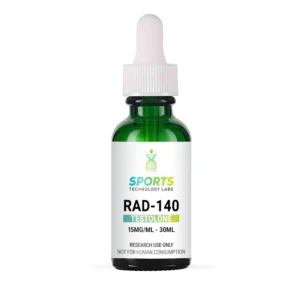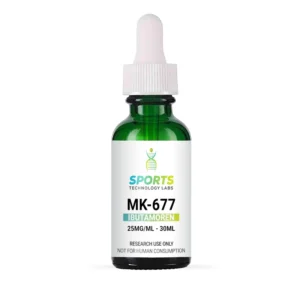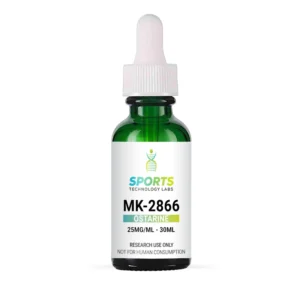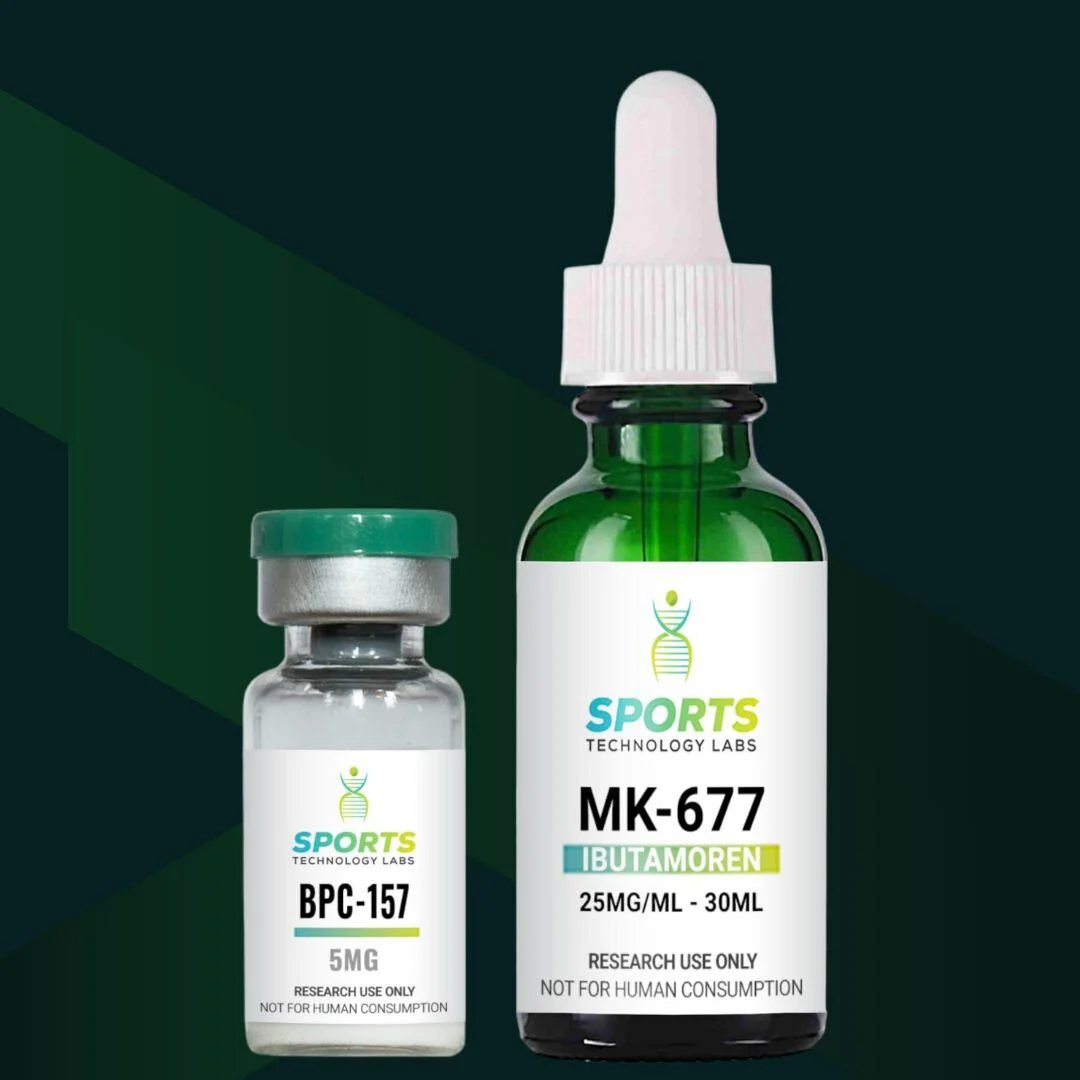
Selective androgen receptor modulators (SARMs) are an emerging class of compounds that are attracting researchers due to their perceived potential. SARMs are ligands of androgen receptors (ARs) and therefore have anabolic properties similar to those produced by anabolic steroids.
Many people often mistake SARMs for steroids due to their similar actions on the androgen receptor(s). This article demystifies them by first explaining the science behind SARMs and busting seven common SARM myths. What are SARMs, and why do so many researchers choose to buy RAD-140 compared to older, more extensively studied anabolic compounds?
SARMs: What Are SARMs?
Selective androgen receptor modulators, SARMs, are synthetically engineered to produce specific targeted effects in the body and are currently approved as investigational compounds in the U.S.
Potential uses of SARMs in sports medicine or therapeutic uses are being researched but have not yet been FDA-approved. These products, marketed as dietary supplements, are false advertisements and are not approved by the FDA.
The Science Behind SARMs
Information on SARMs with scientific backing is scant. Researchers have yet to fully grasp how the different kinds interact within the body and the effects expected from each class. Here are three things to help you understand SARMs, based on preliminary studies.
SARMs and the Androgen Receptor(S)
SARMs are ligands of the AR. This class of compounds interacts with ARs both as agonists and antagonists “selectively.” The selective action differentiates them from steroids.
SARMs are engineered to target androgen receptors in specific tissues and avoid the rest. This enhances their action while limiting adverse effects. They may target androgen receptor (s) in the muscles, for example, that show an impact on fat mass, muscle mass, and bone density.
SARMs may avoid or even behave antagonistically in androgen receptors in the prostate and consequently mitigate prostate enlargement. Studies surrounding SARMs and prostate cancer are underway.
Benefits Researchers Are Studying
Researchers are investigating the potential anabolic properties of SARMs in laboratory settings. Preclinical studies have examined their effects on tissue healing and muscle mass in models of muscle-wasting conditions such as cancer cachexia.
One preliminary study showed that SARMs (RAD-140) have anti-tumor activity against metastatic breast cancer. Researchers are also looking at the potential benefits of treating the following conditions:
- Osteoporosis and bone mineral density
- Hypogonadism
- Alzheimer’s disease
- Muscle atrophy
- Benign prostatic hyperplasia
- Lung cancer and chronic obstructive pulmonary disease
- Cachexia (muscle wasting disorder)
- Sarcopenia
- Metabolism disorders
- Stress urinary incontinence
- Neurologic conditions
A 2019 meta-analysis highlighted the potential applications of SARMs in future therapeutic settings, though these findings remain preliminary and require further research.
Most studies on SARMs have yet to pass phase two clinical trials, so the long-term effects are also unknown. More research must be conducted on the above, as well as how SARMs affect skeletal muscle, in the future.
Side Effects
Research has shown that SARMs may cause several unwanted side effects despite their selective action. Some of the known side effects include:
- Back pain
- Fatigue
- Nausea
- Stomach pain
- Water retention
- Decreased sexual drive
- Reduction in testosterone levels in males
- Liver injury and liver toxicity
- Increased hematocrit
- Headaches
These side effects may not be as adverse as those caused by steroids, but they are significant nonetheless.
7 SARMs Myths
A lot has been said about SARMs, though the science behind SARMs is limited. This knowledge gap has created the perfect environment for rumors and myths to marinate. Here are seven popular myths we’d like to bust.
Myth 1: They Are Illegal
SARMs are considered investigational compounds in the U.S. and are therefore legal for research. SARMs are unapproved for several indications and are not dietary supplements, but they are not illegal.
Myth 2: They Can Be Used in Sports
The use of SARMs in sports is unapproved, even though research shows significant potential in this area. Research indicates they may promote the growth of lean muscle mass without triggering concurrent growth of fat mass.
However, the World Anti-Doping Agency currently bans them. Competitive athletes are prohibited from using SARMs, and these compounds are not approved for any sports performance application. The half-life varies amongst these compounds, and each will be tested for in competitive sports.
Myth 3: They Are Steroids
When you Google selective androgen receptor modulators SARMs, you will likely see several results on steroids popping up. This is because the two classes of compounds have several similarities stemming from their relationship with androgen receptors.
Both SARMs and steroids have anabolic properties and are therefore sought after, but SARMs are not steroids, and the two terms cannot be used interchangeably.
Myth 4: They Are Supplements
Supplements are natural or synthetic compounds manufactured as nutrients to supplement one’s diet. SARMs do not fit this description; therefore, they are not supplements.
Dietary supplement product labels provide different information from SARMs labels. They cannot be used to supplement one’s diet, nor have they received FDA approval as supplements.
Myth 5: They Are More Harmful Than Steroids
Unlike steroids, SARMs are not broken down into dihydrotestosterone and estrogen when metabolized, reducing their “masculinizing” and “feminizing” side effects.
Myth 6: They All Work the Same Way
SARMs exert anabolic effects through their interaction with androgen receptors. However, the action is different for each type of SARM. For example, Stenabolic (SR-9009) is an agonist of the REV-ERB protein, while Cardarine (GW-501516) is an agonist of the peroxisome proliferator-activated receptor (PPAR).
Myth 7: SARMs Are FDA Approved
The FDA disapproves of SARMs as supplements. These are chemicals for research use only. More clinical research needs to be carried out before they can be submitted to the FDA for approval.
The FDA recently issued a statement warning the public about some risks associated with SARMs. The FDA has also approved some anabolic steroids, which can be purchased with a doctor’s prescription.
These myths have led to a gross misunderstanding of the uses, benefits, harmful effects, and legality of SARMs. SARMs research is ongoing, and more research must be conducted to better understand how SARMs affect various parts of the body, including skeletal muscle.
Can You Buy Them Online?
Researchers can buy SARMs online because they are legally available for legitimate laboratory research purposes. They are not approved for human use or consumption. There is a need for some due diligence because many SARMs vendors are disreputable. When purchasing SARMs, you should stay away from vendors that don’t have certificate of analysis (COA) reports available upon request.
A recent study published in the Journal of the American Medical Association highlighted the high affinity of counterfeit selective androgen receptor modulators in the market, so it’s crucial to check sellers for the above qualifications.
Ensure the products contained in the bottle match the label by checking and verifying COAs. A complete list of COAs should be available on every seller’s site.
Visit the Sports Technology Labs Blog for News and Information about SARMs
Sports Technology Labs offers the highest quality RAD-140, Ostarine, MK-677, and other SARMs for sale, intended exclusively for laboratory research use. COAs accompany all compounds to verify identity and quality. These products are not for human use or consumption.
Visit the Sports Technology Labs research blog for information about new products, updates in the industry, side effects, recent scientific literature, and product comparisons.
Scientific References:
1. Basaria S, Collins L, Dillon EL, Orwoll K, Storer TW, Miciek R, Ulloor J, Zhang A, Eder R, Zientek H, Gordon G, Kazmi S, Sheffield-Moore M, Bhasin S. The safety, pharmacokinetics, and effects of LGD-4033, a novel nonsteroidal oral, selective androgen receptor modulator, in healthy young men. J Gerontol A Biol Sci Med Sci. 2013 Jan;68(1):87–95. Doi: 10.1093/gerona/gls078. Epub 2012 Mar 28. PMID: 22459616; PMCID: PMC4111291.
2. Crawford J, Prado CM, Johnston MA, Gralla RJ, Taylor RP, Hancock ML, Dalton JT. Study Design and Rationale for the Phase 3 Clinical Development Program of Enobosarm, a Selective Androgen Receptor Modulator, for the Prevention and Treatment of Muscle Wasting in Cancer Patients (POWER Trials). Curr Oncol Rep. 2016 Jun;18(6):37. Doi: 10.1007/s11912-016-0522-0. Review.
3. Jayaraman A, Christensen A, Moser VA, Vest RS, Miller CP, Hattersley G, Pike CJ. Selective androgen receptor modulator RAD-140 is neuroprotective in cultured neurons and kainate-lesioned male rats. Endocrinology. 2014 Apr;155(4):1398-406. Doi: 10.1210/en.2013-1725. Epub 2014 Jan 15. PMID: 24428527; PMCID: PMC3959610.
4. Solomon ZJ, Mirabal JR, Mazur DJ, Kohn TP, Lipshultz LI, Pastuszak AW. Selective Androgen Receptor Modulators: Current Knowledge and Clinical Applications. Sex Med Rev. 2019 Jan;7(1):84-94. Doi: 10.1016/j.sxmr.2018.09.006. Epub 2018 Nov 30. PMID: 30503797; PMCID: PMC6326857.
5. Christiansen AR, Lipshultz LI, Hotaling JM, Pastuszak AW. Selective androgen receptor modulators: the future of androgen therapy? Transl Androl Urol. 2020 Mar;9(Suppl 2):S135-S148. Doi: 10.21037/tau. 2019.11.02. PMID: 32257854; PMCID: PMC7108998.
6. Meyer, L. FDA In Brief: FDA warns against using SARMs in body-building products. U.S. Food and Drug Administration. 2017 Oct.
7. Van Wagoner RM, Eichner A, Bhasin S, Deuster PA, Eichner D. Chemical Composition and Labeling of Substances Marketed as Selective Androgen Receptor Modulator and Sold via the Internet. JAMA. 2017;318(20):2004–2010. doi:10.1001/jama.2017.17069




